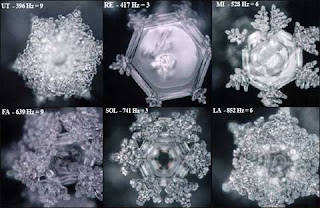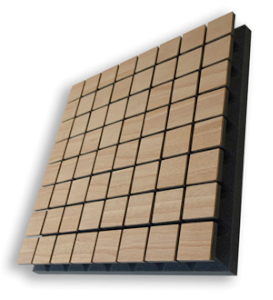Tonmöbel Classics| Hifi Report 1978DER SPIEGEL 35/1978
"Frequenzweichen, steilflankig abgestimmt"
SPIEGEL-Redakteur Klaus Umbach über die "HiFi 78" in Düsseldorf
Ein Armaturenbrett Cockpit zu nennen zeugt von Kennerschaft. Ein Händchen für die verwirrende Plantage von Schaltern und Knöpfen links und rechts vom Tachometer macht den Fahrer zum Profi. Cockpit-Lenker sind Leute mit Profi-Look.
In Profi-Look kleidet auch die HiFi-Industrie, der nobelste Zweig der Unterhaltungselektronik, jene Geräte, deren Leistungen nur noch von der Unübersichtlichkeit ihrer Handhabe übertroffen werden.
Eine Woche lang, bis letzten Donnerstag, pilgerte die Klientel solch wohltönender Kraftpakete nach Düsseldorf und dort über 22 365 Quadratmeter Ausstellungsfläche. um ganz Ohr zu sein für DIN 45 500, die Norm des industriellen Schönklangs.
In dieser HiFi-Gemeinde versammeln sich, zur Genugtuung der auf ein kräftiges Absatz-Crescendo hoffenden Gerätebauer, überwiegend Teens und Twens, deren Eltern noch liebevoll Tonmöbel in Chippendale abstaubten. Der Nachwuchs hantiert an seinen Racks. wie die klotzig gestapelten Apparate in Rollgestellen inzwischen genannt werden. Da fummeln die Jünger der integrierten Schaltkreise mit kultischem Vergnügen an ihren Frontplatten in Silver Spot oder Black Focus.
Als unveränderliches Kennzeichen bei ihrer Düsseldorfer Wallfahrt erwies sich die Plastiktüte, in der sie das messianische Kauderwelsch der Industrie ehrfürchtiger herumtrugen als weiland Höcherl das Grundgesetz: die Verheißungen von Slew Rate und Input Level, von Phase-lock-loop-MPX und Dual-Gate-MOS-Feldeffekt-Transistoren.
Eingeweiht sind sie oder geben sie sich, diese Plastiktüten-Träger, in dem babylonisch verschlüsselten Kult um den angeblich vollkommenen, vor allem aber lauten Klang aus der Kiste. Eine Lautsprecher-Box von wenigstens 120 Watt maximaler Belastbarkeit nennen sie wenn nicht ihr eigen, so doch ihr Traumziel, auch wenn dieser Koloß, voll aufgedreht, jedes deutsche Reihenhaus in den Grundfesten erschüttern würde.
Doch allem Fortissimo zum Trotz, mit dem die Branche ihren Dernier cri verbreitete, blieb das rheinische Mekka der Phon-Fetischisten "eine leise Messe", was mir eine Dame vom Informationsstand wie entschuldigend mit auf den Rundweg gab: Tatsächlich fehlte in den sieben Düsseldorfer Hallen praktisch alles, was man gemeinhin Musik nennt.
Nicht nur, daß weder Tschaikowski noch Pink Floyd durch die Säle schwappten -- solch ordinäre Total-Beschallung überlassen die feinen Hi-Fisten dem Konsumentenrummel der Berliner Funkausstellung. Die Batterien von Boxen, mochten sie nun aus geschäumtem Polyurethan gepreßt oder "mit steilflankig abgestimmten Frequenzweichen" veredelt sein, blieben stumm. Ob die "nur fünf Prozent Dachschräge bei Wiedergabe einer 50-Hz-Rechteckwelle" sich auszahlen oder nicht -- der technische Fortschritt, wenn"s denn einer ist, mußte selbst dem geneigtesten Ohr verschlossen bleiben.
Wo eine Firma, um die Güte ihrer Produkte zu demonstrieren, wirklich eine bescheidene schalldichte Ohrenweide hergerichtet hatte, schlugen einem die Pop-Produktionen so knallhart um den Kopf wie in den Diskotheken der Düsseldorfer Altstadt.
Individuelles Lauschen, kritisches Vergleichen, Abwägen, Testen -- neben der Verkaufsabsicht als Zweck einer solchen Messe immerhin denkbar -- waren unmöglich.
Denn da es sich in Düsseldorf nahezu ausschließlich um Apparate im Profi-Look drehte, begann zunächst der Kleinkrieg der Knöpfe, der Schalter, Hebel, Lämpchen und Blinker, deren Sinn sich vielleicht aus einer (nirgends ausliegenden) Gebrauchsanweisung erschlossen hätte, so aber, mit all den englischen Kürzeln, nur Gewieften oder Glückspilzen dämmerte.
Wer schließlich durch leichten Druck irgendeiner Sensortaste oder gefühlvolles Betätigen irgendwelcher Federdruckkontakte ein Kassetten-Deck mit Light Emitting Diods oder ein quarzgesteuertes Plattenlaufwerk mit vergoldeten Kontakten in Gang gesetzt hatte, vernahm nichts: Die Geräte liefen, wenn überhaupt, still vor sich hin. Wohl in Sorge, ihre klangsüchtige Kundschaft könnte die Finger nicht bei sich halten und das Spiel-Zeug in ihren Plastiktüten mitgehen lassen, hatten die Firmen erst gar kein Abhörmaterial bereitgestellt.
So mußte der Interessent denn auch auf enen so simplen Versuch verzichten, ob die Minderung der Gleichlaufschwankungen ihm die wiedergabetechnisch immer noch problematischen Klaviertöne etwa im ersten Satz der "Mondscheinsonate" nun endlich jaulfrei ins Wohnzimmer trägt.
Während die rat- und plattenlose Mehrheit der Besucher schließlich meist mißvergnügt die UKW-Skala der blitzenden Tuner absuchte, kramten die Gläubigsten der HiFi-Gemeinde in ihren Plastiktüten und entnahmen diesen eine Tonkonserve, die sie vorsorglich von daheim mitgebracht hatten.
Plexi-Girl`s

Found via
hifi-forum
























